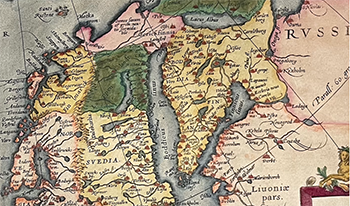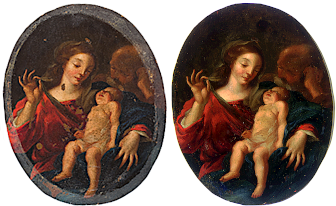
Hyperspectral imaging (HSI) has been widely used in the conservation studies of various cultural heritage (CH) objects, e.g., paintings, murals, and handwritten historical manuscripts. In this work, HSI is used to study painted historical maps, i.e., five maps of the Scandinavia region from the Ortelius collection preserved at the National Library of Norway in Oslo. Given knowledge of their colour application and usage, HSI-based pigment identification is performed, assuming several spectral mixing theories, i.e., pure pigments, subtractive, and additive mixing models. The obtained results are discussed, showing both the pure pigment and subtractive mixing model to be suitable for pigment identification in the case of watercolour applied on paper substrate.

Three endmember extraction methods (NFINDR, NMF and manual extraction) are compared in two stages (pre- and post- intervention) of the same painting, a Maternity on copper plate, under study for the formulation of a hypothesis on the authorship and the dating. The endmembers are extracted from spectral images in the 400-1000 nm range. The main aim is to determine if simple automatic endmember extraction is enough for pigment and re-painted areas identification in this case study.